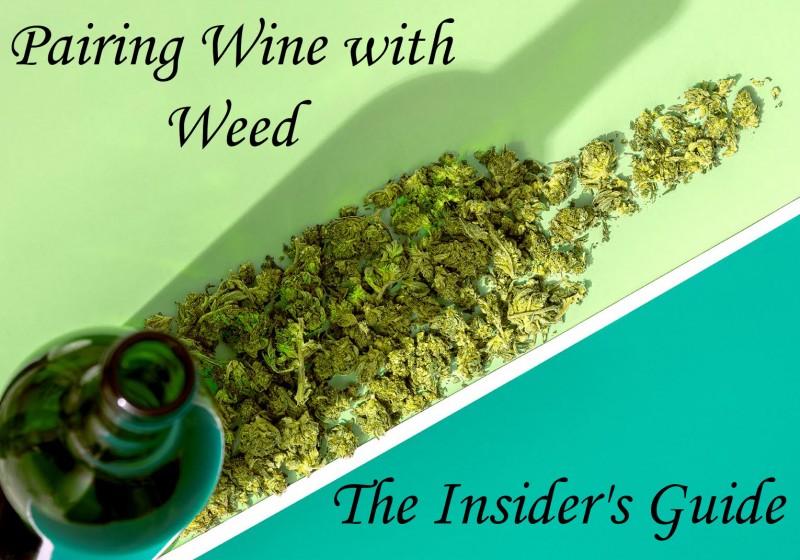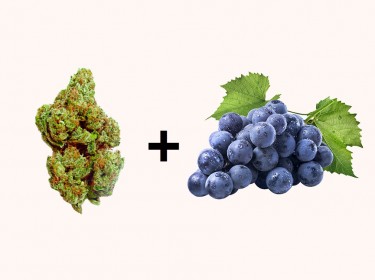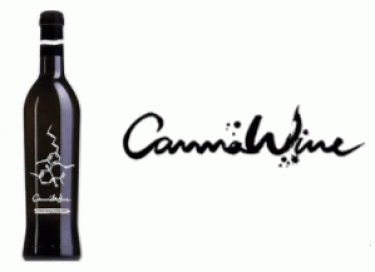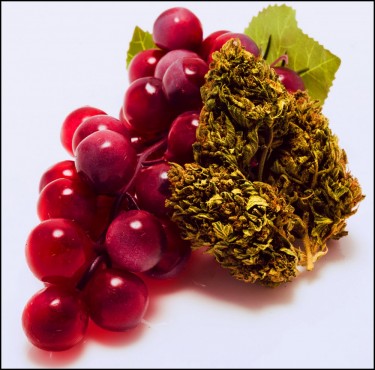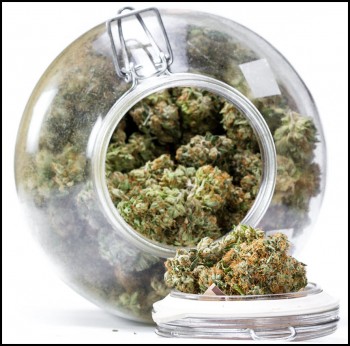How to Pair Wine with Weed - The Insiders' Guide
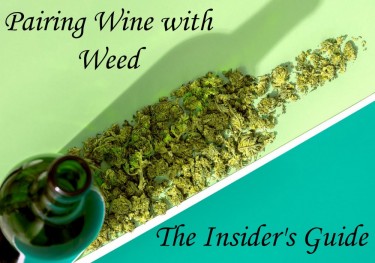
Ever enjoyed pairing a good steak with a full-bodied Cabernet? Or a nice fillet of sea bass with a crisp Sauvignon Blanc? Good news is, wine pairings don’t have to end with your meal. You can also enjoy mixing and matching the wonderful world of wines with weed, too.
While it may sound daunting at first —after all, we’ve all had those nights when mixing weed with alcohol didn’t pan out as great as we’d hoped— it can actually provide for a wonderful overall sensory experience.
If you’re unsure on how to tackle the whole thing, here are a few tips to keep in mind. Remember, above all, to have fun with it. Figuring out how to pair wine with weed can be a great challenge if you want to up your home entertaining game, or just want to jazz up date night.
1. Approach it as you would a food and wine pairing. If you’ve never paired wine with food before and are completely new to the pairing experience, try to identify the different favor profiles and aromas in the wine or strain you want to pair and go from there. Cannabis and wine have unique flavor profiles that will help you choose how you go about your pairings.
2. Pay attention to terpenes profiles. Terpenes are the most crucial compound in the flavor and aroma of a plant. All plants have them. They’re what give weed its distinct aromas and colors.
In that same way, they also provide many of the complex flavors and aromas you get from wine grapes. They also possess a variety of therapeutic benefits.
To help you out, here’s a primer on terpenes profiles and which strains and wines best exemplify them.
If it smells: Earthy
The dominant terpene is probably: Myrcene
Benefits: Sleep aide, muscle relaxant, anti-depressant
Strains: Kosher Kush, Himalayan Gold, White Widow
Terpene effect: Sleepy, sedated
Wine pairing: Pinot Noir, Syrah, Grenache
If it smells: Citrusy
The dominant terpene is probably: Limonene
Benefits: Stress reliever, weight loss aide, mood-enhancer
Strains: Lemon Haze, OG kush, Tangie
Terpene effect: Enhanced mood, uplifted
Wine pairing: Chardonnay, Sauvignon blanc
If it smells: Piney
The dominant terpene is probably: Alpha-pinene
Benefits: Aids asthma, provides energy, anti-inflammatory
Strains: Bubba Kush, Jack Herer, Trainwreck
Terpene effect: Alert, focused
Wine pairing: Pinot Gris, Vermentino
If it smells: Clovey, peppery
The dominant terpene is probably: Beta-Caryophyllene
Benefits: Anti-anxiety, anti-inflammatory, antioxidant, pain reliever
Strains: Rockstar, Northern Lights, Skywalker OG
Terpene effect: Reduced pain, calmness
Wine pairing: Zinfandel, Cabernet Sauvignon, Petit Sirah
If it smells: Perfume-like
The dominant terpene is probably: Nerolidol
Benefits: Anti-fungal, anti-depressant, sleep aide
Strains: Island, Sweet Skunk, Banana Kush
Terpene effect: Tranquil, peaceful
Wine pairing: Rose, Torrontes
If it smells: Floral
The dominant terpene is probably: Linalool
Benefits: Anti-anxiety, sleep aide, muscle-relaxant, anti-depressant, anti-acne
Strains: Lavender OG, LA Confidential, Amnesia Haze
Terpene effect: Relaxed, rejuvenated
Wine pairing: Muscat, Riesling, Viognier
3. Remember the goal. Pairings are meant to enhance the flavors of both components. You want to accentuate and complement the different flavors each possess. The process may even create new flavors that can’t be experienced with either the wine or strain alone. Use your senses to guide you.
4. Let your environment play a role. When deciding on a pairing, take into consideration the environment. Are in a social setting with friends and acquaintances or at home with a small group of close friends? Do you want the pairing to relax you and get you ready for bed or energize you for a night of socializing? Let that then inform how you proceed with your pairings. Take note that indica strains provide more relaxing, full body highs, while sativa strains typically give a boost of energy and impart a more mental rather than physical or body high.
5. Be aware of the wine’s tannin content. Tannins are astringent compounds present in wine grapes’ skins. They’re what make your mouth pucker after drinking a particularly dry wine and, when combined with weed, can really dry out your mouth. High tannin wines include cabernet sauvignon, zinfandel, merlot, and heavy Italian reds like Nebbiolo and Barolo.
6. Lastly, take it slow. As we mentioned in the intro, many of us know that combining weed and alcohol can have potentially disastrous consequences, so proceed with caution. Listen to your body and, especially if it’s your first time, go slow. Avoid higher ABV wines and be aware of your consumption. Heavier wines can compound the effects of cannabis, so be sure to keep that in mind. Start with a lighter wine first and see how you feel. Once you get used to it, you can start incorporating heavier wines for future pairings.
Keep these tips handy the next time you’re thinking of pairing wine with weed and, as always, remember to have fun with it.
CANNABIS WINE AND MORE, READ THESE...
HOW TO MAKE CANNABIS INFUSED WINE, READ MORE.
OR..
CANNABIS-INFUSED WINE IS HERE AND ITS CANNAWINE!
OR...
WEED AND WINE, WHAT THE INDUSTRIES CAN LEARN FROM EACH OTHER!

